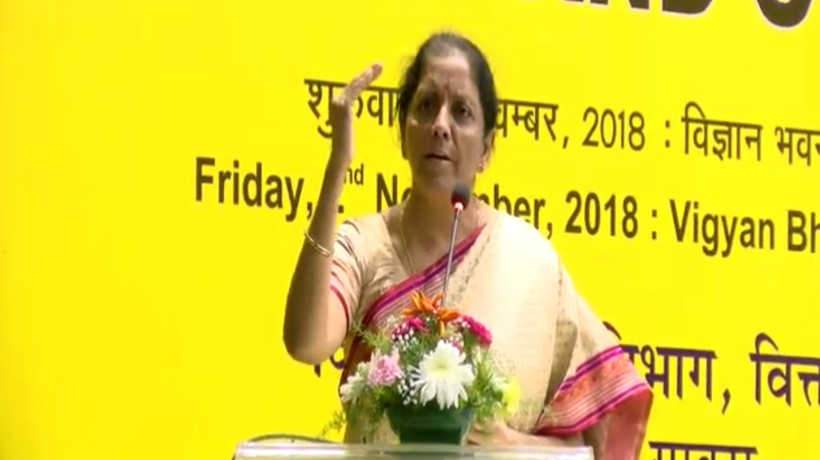Trending Now
- 830 voters names go missing in Kavundampalayam constituency
- If BJP comes to power we shall consider bringing back electoral bonds: Nirmala Sitaraman
- Monitoring at check posts between Kerala and TN intensified as bird flu gets virulent in Kerala
Whats Hot
In Mamata Banerjee vs Narendra Modi fight, why BJP is so combative in Bengal this Lok Sabha election
![]() May 16, 2019
May 16, 2019
When the Lok Sabha election kicked off on April 11 with the first phase of voting, it seemed to be a fight between the Bharatiya Janata Party (BJP) led by Prime Minister Narendra Modi and the Congress under Rahul Gandhi. Going into the first phase Balakot and Rafale deal were at the centre of the two election narratives.
Now on the penultimate day of election campaign and the last day of electioneering in Bengal, the focus has shifted to the Mamata Banerjee versus Narendra Modi battle in the east. In the background of this face-off is the violence that has resulted from the clashes between the supporters of the TMC and the BJP.
On Monday evening, the BJP president Amit Shah’s road show was marred by violence in which many supporters on both the sides were injured and a statue of 19th century social reformer Ishwar Chandra Bandopadhyay, better known as Vidyasagar, was damaged.
Mamata Banerjee and Amit Shah have traded charges over the incident. PM Modi, who addressed two rallies in Bengal on Wednesday, accused Mamata Banerjee of destroying the culture of the bhadralok (gentleman).
He said, Democracy has given you the chief minister’s chair and you are killing it. The entire country is watching your misdeeds…Didi should not be kept in power. In the past four to five years she has shown her true colours.
Incidents of violence forced the Election Commission to cut the election campaign by 20 hours, limiting it till 10 pm on May 16 instead of 6 pm May 17.
Beyond violence, a signal from 2018 panchayat polls
Violence is not a new phenomenon in elections in Bengal. The panchayat elections in 2018 saw incidents of gruesome violence. The BJP claimed 52 of its workers were killed in the run up to the panchayat polls. The TMC claimed it lost 14 workers in poll violence.
The Mamata Banerjee government was at the receiving end from the BJP, the Congress and the Left. All these parties alleged violence and threats from the TMC party cadres that resulted in Mamata Banerjee’s party winning 34 per cent of seats uncontested.
Defending the Mamata Banerjee government, TMC leader Derek O’Brian had then tweeted, To all newborn’ experts on Bengal #PanchayatElections in State have a history. 400 killed in poll violence in 1990s in CPIM rule. 2003: 40 dead. Every death is a tragedy. Now closer to normal than earlier times. Yes, few dozen incidents. Say, 40 out of 58,000 booths. What’s %age? (sic).
During the panchayat polls last year, the Congress and the Left seemed to have accepted the superiority of the TMC in electoral contests. But the results of the local elections gave the BJP a shot in the arm. The party came second to the TMC, which won an overwhelming number of seats. However, the BJP saw a chance to grab the political space ceded by the Left and the Congress in Bengal.
BJP’s rise in Bengal
Historically, Bengal has given the BJP its intellectual fountainhead in the form of Bharatiya Jan Sangh (BJS) founder Syama Prasad Mookerjee. RSS founder KB Hedgewar studied medicine in West Bengal. The RSS began its Hindutva work in 1950s in the state.
The BJS had succeeded in winning two Lok Sabha seats and nine assembly seats in first elections in 1952. But the BJS and its successor the BJP could register another win only in 1998, when Tapan Sikdar won this seat despite overbearing presence of the Left in Bengal. He retained Dum Dum Lok Sabha seat till 2004. Dum Dum is one of the nine Lok Sabha seats going to the polls on May 19.
Over the past 15 years, the BJP has focused on building its base in Bengal’s regions where Hindi-speaking population has been growing and also in the bordering districts, which have seen migrants from Bangladesh. The BJP has tried to cash in on the sentiments against infiltrators (Muslims; Bangladeshi Hindus are commonly referred to simply as migrants).
The BJP’s campaign was helped by Bengal CM Mamata Banerjee’s focus on keeping the Muslim votes on her side with measures like pension for maulvis, who in turn have ensured greater support of the community for the TMC.
Controversies surrounding Durga Puja and Muharram, and Saraswati Puja sharpened the communal divide with the BJP gaining ground.
Mamata Banerjee’s vehement opposition of the Modi government over the issues of National Register of Citizens (NRC) and Rohingya Muslim immigrants led to further polarisation and strengthened the BJP’s cadre base. This has happened at a time when the CPM and the Congress are losing ground support in Bengal.
Act East
At its Odisha national executive meet in 2017, the BJP devised a strategy, Act East to expand its base in the eastern states West Bengal, Odisha, Jharkhand and Bihar. These states have 117 Lok Sabha seats. In 2014, only 47 seats had gone the BJP’s way.
With 42 seats, Bengal sends the third largest number of MPs to the Lok Sabha and hence an obvious focus state for the BJP. The TMC had won 34 of these seats five years ago while the BJP could win only two.
The BJP had made almost a clean sweep in the Hindi heartland in 2014. The party estimates loss of seats in this region, where it lost three states of Rajasthan, Madhya Pradesh and Chhattisgarh to the Congress. It faces a stiff challenge from a resurgent Rashtiya Janata Dal (RJD) in Bihar.
On the back of Modi wave, the BJP had polled nearly 17 per cent votes in 2014 Lok Sabha election. Its vote share reduced to little over 10 per cent in 2016 assembly election. But the party won 18 per cent of the panchayat seats in 2018 giving it confidence that Act East strategy was working for the BJP.
In the past two years, the BJP has seen workers from other parties, primarily the CPM joining its ranks in South Bengal. The party has fielded many disgruntled leaders from the TMC and also the CPM.
The panchayat election also indicated that the BJP may be lacking in organisation in Bengal, it has a swelling support base at the cost of the Left and the Congress. Senior CPM leaders such as Buddhadeb Bhattacharya and Manik Sarkar warned their cadres from switching to the Right after having trained in the Left for so long.
Sarkar recently told party cadres, To gain freedom from the TMC, don’t make the mistake of choosing the BJP. It will be a blunder.
Bhattacharya was equally dismissive in his interview to CPM mouthpiece Ganashakti saying, There is no use in leaping from a TMC frying pan into the BJP’s fire.
Focus on Bengal is evident from the fact that both PM Modi and Amit Shah travelled to Bengal the most number of times after Uttar Pradesh, which has 80 Lok Sabha seats. Both PM Modi and Amit Shah addressed at least 15 election rallies each in Bengal.
The BJP’s hope of returning to power at the Centre again hinges a lot, according to its own calculations, on Bengal’s 42 Lok Sabha seats. And, Mamata Banerjee is not going to let this happen without putting up a fight.























